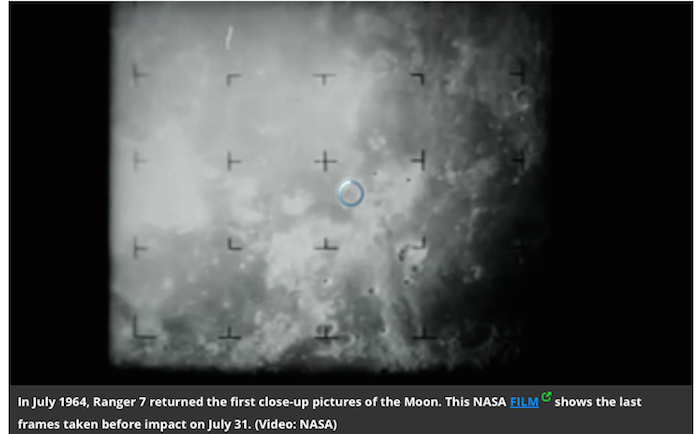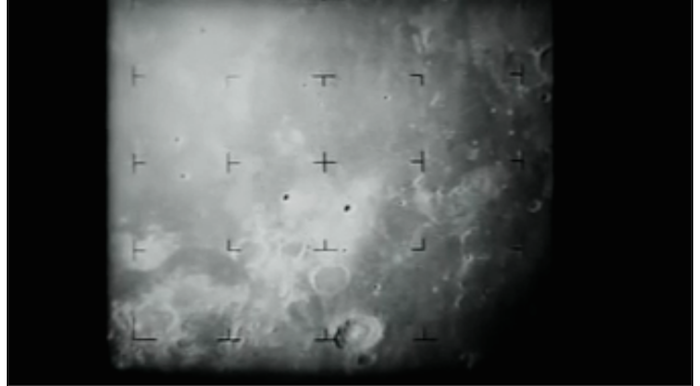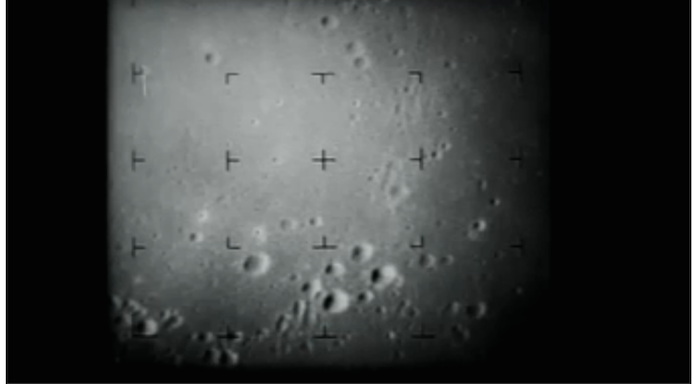.
Fifty years ago this week, Ranger 7 showed us what the lunar surface looks like.
.
“It was like looking at a soft quilt or something, no jagged edges on anything,” muses Jim Burke, as if he’s describing something every school kid hasn’t seen a hundred times. “It looked like fresh snow in a way, except it was grey instead of white.”
At the time—50 years ago tomorrow—Burke was one of the first people on Earth to see what the surface of the Moon looks like up close. Early on the morning of July 31, 1964, he joined his colleagues in poring over a SERIES of printed photographs, the pockmarked Moon getting closer and closer until one final blurred image marked the moment when Ranger 7 impacted the surface, making its own brand-new crater. A stripe of static along one side of that last photo indicated the interruption of the final transmission.
At last, Ranger had worked.
A few minutes before the pictures arrived at the Jet Propulsion Laboratory in Pasadena, California, word had gone out across America that the country finally had its first successful mission to the Moon. The press was going nuts in an auditorium down the hall. People were openly weeping. That’s how badly NASA, Burke and the rest of the Ranger team at JPL had needed a WIN.
Shortly after the Soviets launched Sputnik 1 in 1957, JPL director Bill Pickering had suggested one-upping America’s cold war rivals by sending a spacecraft to the Moon. Burke was named PROJECT MANAGER for the resulting Ranger missions—spacecraft that would drop a rugged capsule to the lunar surface, gathering scientific data in the process.
The first five Rangers, however, suffered varying degrees of failure, burning up in Earth’s atmosphere, careening into deep space, and hitting the moon with all onboard instruments turned off. After Ranger 5, Burke was replaced as PROJECT MANAGER by his longtime friend Harris “Bud” Schurmeier. Then Ranger 6 failed, too. Although it slammed into the Moon precisely as planned, it failed to take any pictures.
By that time, getting close-range, high-resolution photographs had become the mission’s only goal as the ENGINEERS, short of funds and hoping for a last chance to make it work, stripped the spacecraft of its original science experiments and the hard-landing capsule (Burke had the adage “the better is the enemy of the good” posted on his office wall, next to a picture of the Soviet Venera 1 spacecraft).
Part of Ranger’s original purpose had been to help the designers of the forthcoming Apollo missions—the U.S. space program’s raison d’etre by this point—understand what kind of surface the lander would encounter on the Moon. But by the time Ranger finally worked, the Apollo lander had already been designed. At that point, Ranger became mostly about redemption.
It’s not easy sending a spacecraft beyond Earth ORBIT, even today. In 1964, there were no old-timers to ask for advice, because no one had ever done what JPL and its Soviet counterparts were trying to do.
Burke was in his late thirties when he ran the Ranger program. He rode a bright green motorcycle, wore an aviator jacket, and was known for his unshakeable enthusiasm. He also had a healthy sense of COMPETITION with the Soviets, and trusted that dogged engineering would prevail. “We had a fundamental belief that if you kept trying and stuck to your guns, and understood every failure both on the ground and in flight, that you would eventually get a success,” he says today.
It took three hard years of trying before Pickering had the satisfaction of opening a manila envelope CONTAINING Ranger 7’s lunar close-ups. Homer Newell, director of the Office of Space Sciences at NASA, had just finished up a congratulatory call from President Johnson. Bud Schurmeier brought out a bottle of champagne he’d chilled optimistically for Ranger 6.
Before opening the envelope, Pickering had made a point to grab Burke from his DESK, not wanting him to miss the big payoff. The string of failures had taken their toll on NASA and especially on JPL—even Congress had started questioning whether a university-based outfit (JPL is run by Cal Tech) should be at the helm of a big, expensive NASA space mission. Burke himself had caught a lot of the flak, but Pickering knew how much he’d done to push Ranger in the right direction.
“I thought that was pretty neat that he remembered that I had been beaten upon for years for no success,” Burke remembers. “My reaction was, What a wonderful fellow our boss is, that he thought right away of calling me and telling me to come and enjoy it with him.”
The photos Pickering splayed out on his DESK were only hours old. The negatives had been flown from the giant dish at Goldstone Tracking Station in the California desert to Hollywood’s Consolidated Film Industries for processing, then had been rushed by car to Pasadena. Before that, in the form of radio transmissions, they’d traveled nearly 239,000 miles in a little more than a second.
Schurmeier uncorked his champagne as they all gathered around, relieved and awed at what they’d accomplished. They’d gathered images of the Moon’s surface at a resolution three orders of magnitude greater than the best taken from Earth. They’d redeemed JPL, which would one day pull off even more audacious landings on Mars. They’d also pioneered technology that would carry instruments to the far reaches of the SOLAR SYSTEM and beyond. Now the Moon was no longer just an object in the sky, but a place men could walk. And they were seeing it for the first time.
“It was a real delight to look at that,” says Burke, “because it was BEAUTIFUL.”

Frams: NASA-Video







.

The last image taken by Ranger 7, less than two-tenths of a second before hitting the moon on July 31, 1964. The spacecraft was about 480 meters above the lunar surface when transmission began; impact came before the PHOTO finished sending, so the right half is cut off. The resolution in this final image is about half a meter. (NASA)
Quelle: airspacemagazin
4591 Views
